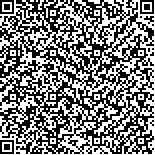| 摘要: |
| 1993年采用α谱仪和大面积屏栅电离定对柴达木盆地盐湖水、地下水、河水以及地表和两个钻孔沉积物中的U,Pu和Am进行了测定。结果表明,各类水样中239Pu(含240Pu,下同)的平均含量高出表层海水约1000倍,其239Pu/238U的活度比在0.001-0.530之间;两钻孔沉积物中239Pu的平均值分别为4.9±0.8mBq/g和2.4±0.5mBq/g,239Pu/238U的活度比为0.141和0.088,由此探讨了U,Pu和Am的分布特征、239Pu/238U比值的变化规律以及沉积物和水中Pu的来源。 |
| 关键词: 超铀元素 分布特征 Pu的成因 柴达木盆地 |
| DOI: |
| 分类号: |
| 基金项目:国家自然科学基金资助项目,49070136号 |
|
| DISTRIBUTION PATTERNS OF TRANSURANIUM IN SALT LAKE ENVIRONMENTS IN QAIDAM BASIN, NORTHWEST CHINA |
|
HAN Feng-qing,HUANG Qi,LIANG Qing-sheng,LIU Jian-hua,LIU Shu-tian
|
|
1.Institute of Salt Lakes, The Chinese Academy of Sciences,Xining, 810008;2.Institute of Atomic Energy of China, Beijing, 102413
|
| Abstract: |
| In 1993, U, Pu, Am contents were determined by alpha spectrometry and a large-area screen-grid chamber, for fresh waters (river, well, hot spring and underground waters), salt lake brines and sediments from Qaidam Basin, northwest China. The average contents of transuranium and their variations (represented by the data in parentheses) are as follows: 1) 238U: 2028 (5.8 - 5380) mBq/L in brines, 420 (74 - 806) mBq/L in fresh waters, 50 (4.3 - 171) mBq/g in the sediments of Gasikule Salt Lake (SGSL) and 29 (0.13 - 71) mBq/g in the sediments of Kunteyi Salt Lake (SKSL); 2) 239Pu: 7.4 (3.1 - 16.7) mBq/L in brines, 7.9 (2.l - 19.7) mBq/L in fresh waters, 4.9 (2.0 - 18.0) mBq/g in SGSL and 2.4 (0.012 - 5.8) mBq/g in SKSL; 3) 239Pu/238U average active ratios: 0.085 (0.001 - 0.53) in brines, 0.031 (0.004 - 0.091) in fresh waters, 0.141 (0.040 - 0.91) in SGSL and 0.088 (0.022 - 0.26) in SKSL; 4) 238Pu: 0.35 (0.20 - 0.50) mBq/g in travertine,0.28 (0.10 - 0.78) mBq/g in SGSK and 0.13 (0.05 - 0.68) mBq/g in SKSL; and 5) 241Am: 2.26 (0.27 - 4.5) mBq/L in brines.
Pu in the various waters and salt lake's top layer sediments (within 22 m from the bed) originates mainly from nuclear tests and accidents, on the contrary, Pu in salt lake's bottom layer Sediment (22 m below the bed) is mainly from nature nuclear reaction. U in the various waters and sediments is derived from chemical weathering of rocks and minerals around Qaidarn Basin. |
| Key words: Transuraniums, Distributional characteristics, Origin of Pu, Qaidam Basin |
